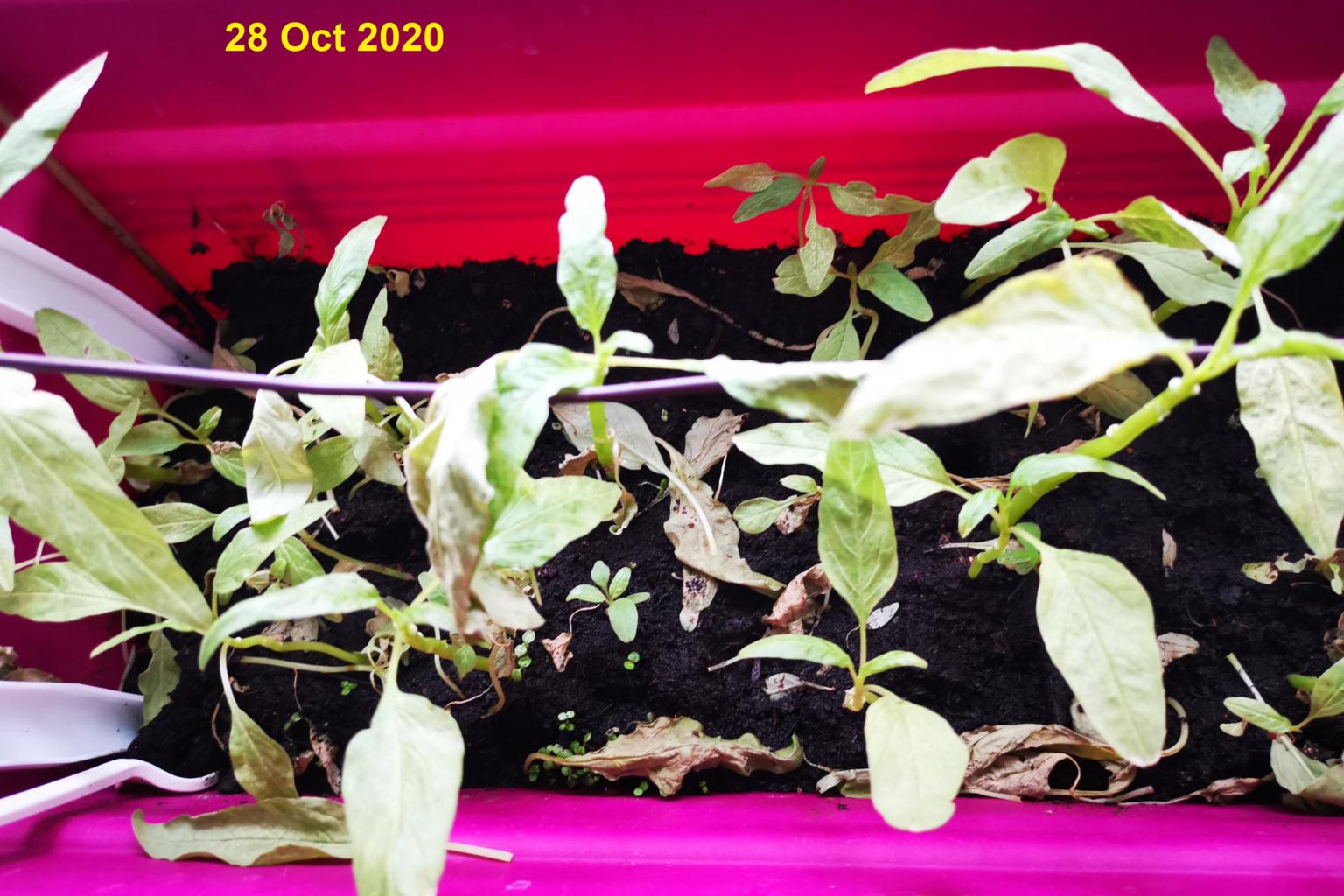Root Awakening
Sign up now: Get ST's newsletters delivered to your inbox

The shallow soil depth will also not provide sufficient room for your numerous plants to grow larger.
PHOTO: SAM TAI CHOI
Follow topic:
SPINACH LACKING NUTRIENTS
I am a budding farmer and grew my spinach from seeds given by the National Parks Board. It was growing well until recently, when I realised the leaves turned yellow or dropped off. I watered the plant daily and applied fertiliser weekly. Can you tell me what is wrong?
Sam Tai Choi
Your plant is yellowing probably due to a lack of nutrients. It could be due to a growing substrate that is too moisture-retaining or has a pH level that is not suited for the plant's growth.
If the soil is based on organic matter and wet for prolonged periods, it may be a good idea to add gritty materials like fine pumice or Leca to help with drainage. You should also test the substrate pH level to ensure it is on the slightly acidic side preferred by most plants.
Next, fill your trough with substrate up to 3 to 5cm from the rim. This will ensure that your plants receive sufficient sunlight that is required for growth.
Currently, some seedlings are located far too deep in the trough and will be shaded. The shallow soil depth will also not provide sufficient room for your numerous plants to grow larger.
SEASHORE ARDISIA IS A NATIVE PLANT OF SINGAPORE
Please identify this tree growing in my garden. It is a few years old and about 2m tall. It is flowering for the first time.
Tan Peng Boon
The plant is commonly known as the Seashore Ardisia. Its botanical name is Ardisia elliptica.
It is native to Singapore and grows naturally in coastal areas. It is widely planted in the country's landscapes and can be trained to grow as a large shrub or a tree.
The tree produces attractive clusters of fruit that turn black when ripe and are food for local fauna, such as birds and other small fruit-eating mammals, which are vital for its seed dispersal.
SAPLING IS THE NAPPY PLANT
What plant is this? It is growing in my garden.
William Goh
The sapling appears to be the Nappy Plant, botanically known as Claoxylon indicum. It is a native plant of Singapore and is often seen growing along secondary forest edges or open areas.
The leaves are reported to be eaten as a leafy vegetable and have folk medicinal uses.
It can grow into a tree up to 4m tall with a rather attractive egg-shaped crown.
WATER AND PEST ISSUES AFFECTING PLANTS
Why is my Moringa shedding yellow leaves? My long bean plants are not growing well either. Red ants attack the beans and they are hollow inside. Finally, what is the name of the potted plant and can it be eaten?
Tan Peng Hock
Your drumstick tree may be suffering from waterlogging. It is a tree that is generally drought-tolerant when established. But it dislikes wet feet if it is grown in a poorly drained site outdoors. Check if the soil is too compacted as this will impede water drainage too.
For the long beans, check if there are sucking pests such as aphids. Aphids produce sugar-rich honeydew which may attract ants. You may want to manage the sucking pest population by spraying plants with neem oil or summer oil pesticides. These are available for sale in local nurseries.
As for the potted plant, it appears to be the Longevity Spinach (Gynura procumbens). Its leaves are eaten as a vegetable and used in folk medicine to treat ailments like hypertension.
Do not self-medicate without guidance from medical professionals.
Answers by Dr Wilson Wong, an NParks-certified practising horticulturist, parks manager and ISA-certified arborist. He is the founder of Green Culture Singapore and an adjunct assistant professor (Food Science & Technology) at the National University of Singapore.
Have a gardening query?
E-mail it with clear, high-resolution pictures of at least 1MB, if any, and your full name to stlife@sph.com.sg. We reserve the right to edit and reject questions.

